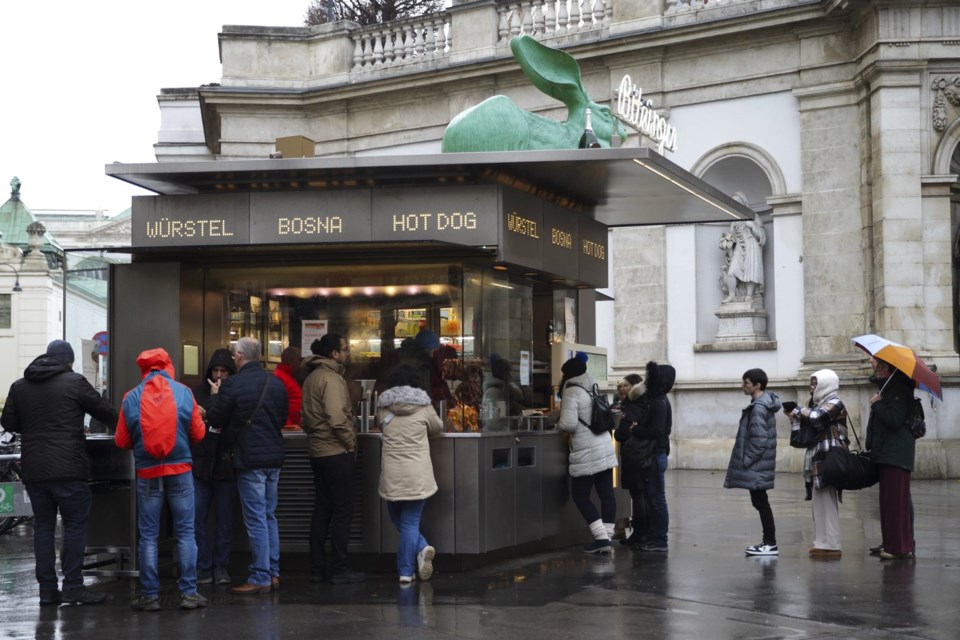VIENNA (AP) — The Vienna sausage stand is a place where the street sweeper, the manager, the tourist and the celebrity converge for the same tasty snack. Now it also has the .
The culture of the humble “Würstelstand” became this week one of the latest additions to the national list of , overseen by the Austrian UNESCO Commission. It joins the Austrian capital's distinctive wine taverns, or “Heurigen,” which have been listed since 2019, and the city's famous coffee house culture, which was honored in 2011.
The Würstelstand, which can now point to a history going back generations, is more than just a source of greasy gastronomic satisfaction.
The street stand is known for bringing people of many classes and backgrounds together and has its own distinctive vocabulary.
Meet the “Haasse,” a coarse boiled sausage, and also the “Käsekrainer” — a smoked creation infused with cheese that oozes out, also sometimes known as the “Eitrige,” or “suppurating” sausage. There is also the “Oaschpfeiferl,” a spicy peperoni, and the “Krokodü,” a gherkin.
“Sausage stands have a long history in Vienna," said Josef Bitzinger, whose Bitzinger Würstelstand is located next to the Albertina museum and just behind the Vienna State Opera.
“Originally it was just a bucket with hot water in which the sausages used to swim," he said. They were sold from "small carriages drawn by dogs and bigger ones drawn by horses, later by a VW bus or a tractor to their spot.”
The tradition goes back to the pre-World War I days of the Austro-Hungarian Empire, when former soldiers set up mobile cookshops to make a living. The city’s longest-lived stall in a fixed location, Würstelstand Leo, has been serving up sausages since 1928. The stands developed into a bigger institution after wider-ranging permission for fixed stalls was granted in 1969.
It was then that the griddle was introduced and the cheesy Käsekrainer invented, Bitzinger said. "Today that’s already a classic.”
The UNESCO designation “honors the tradition, the hospitality and the diversity of our city,” Mayor Michael Ludwig said in a statement.
“This title is a recognition for all those Viennese who, with their warmth and their charm, make the sausage stands more than just a snack place — a meeting place where joie de vivre and culture come together.”
Bitzinger said that “we have been fighting a long time for this.”
“The special thing about it is that it’s a form of gastronomy everybody can afford," he said. "Here the general director and, during the opera ball, a celebrity stands next to a worker and the street sweeper who just finished cleaning the street. That unites people.”
___
Associated Press writer Geir Moulson in Berlin contributed to this report.
Philipp Jenne, The Associated Press



